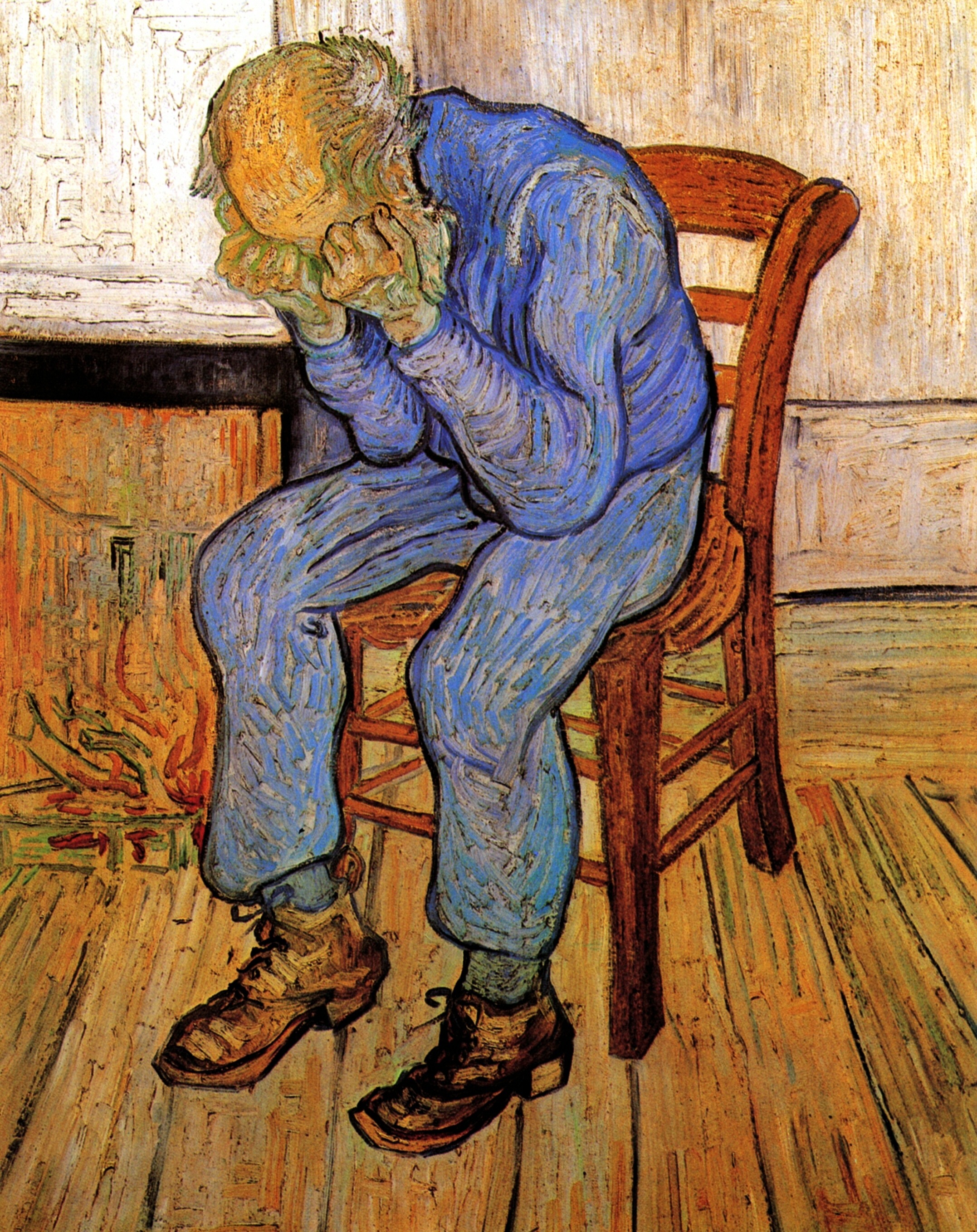Godly Sorrow and the Absence of Regret
 Vincent van Gogh is famous for his vivid paintings and struggle with depression. His depiction of the Old Man in Sorrow captures the artistic genius of van Gogh in company with his deep sadness. The Dutchman received treatment for his illness but eventually destroyed himself in the company of a canvas, paint, and pistol. This type of burden is far greater than anything I have ever bore. However, there is an universal sentiment conveyed in his work. I see the man in the chair and am empathetic toward his plight. But is it ever good for me to be sad? Is there such a thing as Godly sorrow? And how do we distinguish it from the other types of grief?
In a letter to the Church in Corinth, Paul describes the characteristics of Godly sorrow. He says, "Godly sorrow brings repentance that leads to salvation and leaves no regret, but worldly sorrow brings death (2 Corinthians 7:10)." Here we see two types of sadness with two very different consequences. Godly sorrow leads to salvation while worldly sorrow leads to death. There is a crucial point at which we can evaluate the type of suffering we endure: regret.
Vincent van Gogh is famous for his vivid paintings and struggle with depression. His depiction of the Old Man in Sorrow captures the artistic genius of van Gogh in company with his deep sadness. The Dutchman received treatment for his illness but eventually destroyed himself in the company of a canvas, paint, and pistol. This type of burden is far greater than anything I have ever bore. However, there is an universal sentiment conveyed in his work. I see the man in the chair and am empathetic toward his plight. But is it ever good for me to be sad? Is there such a thing as Godly sorrow? And how do we distinguish it from the other types of grief?
In a letter to the Church in Corinth, Paul describes the characteristics of Godly sorrow. He says, "Godly sorrow brings repentance that leads to salvation and leaves no regret, but worldly sorrow brings death (2 Corinthians 7:10)." Here we see two types of sadness with two very different consequences. Godly sorrow leads to salvation while worldly sorrow leads to death. There is a crucial point at which we can evaluate the type of suffering we endure: regret.
Godly sorrow leads to salvation while worldly sorrow leads to death.
Regret is the evidence of worldly sorrow and helps us intervene before we suffer its consequence. Know that your sadness should be a first step towards repentance. That is to say, if you are sad because of something you have done ask for forgiveness; if you are sad because of something someone else has done then you must be prepared to forgive. Refraining from God's grace, weather coming or going, results in anemic spirituality. Is there a sadness in your life that you need to give to God? Are you haunted by regret? Accept God's forgiveness for yourself and others and leverage the utility of sadness for your own edification.
